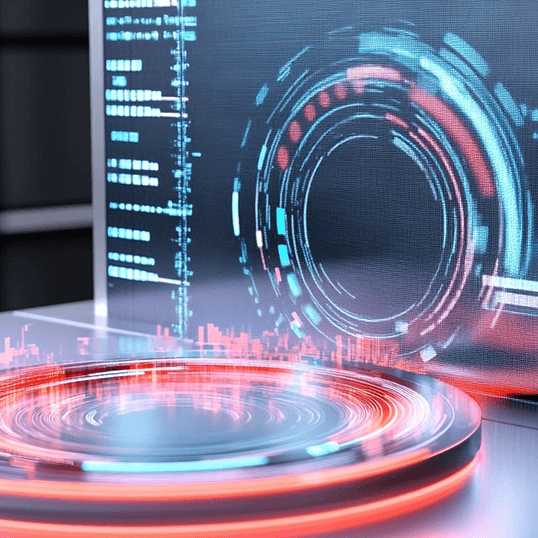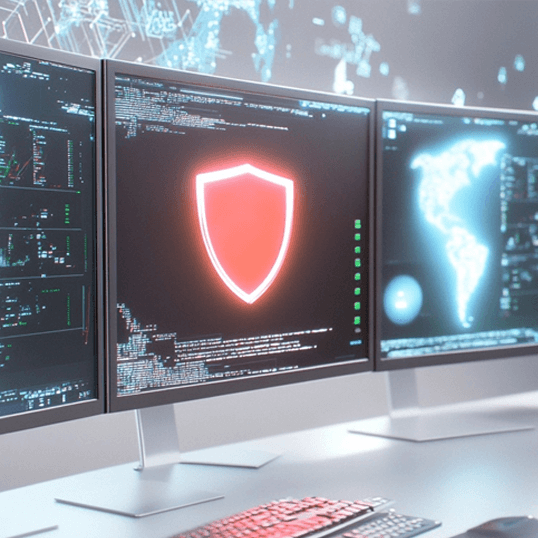As the healthcare industry faces a surge in sophisticated cyber threats and tighter compliance regulations, Security Information and Event Management (SIEM) for Healthcare has emerged as an essential technology for Chief Information Security Officers (CISOs) striving to protect sensitive patient data. SIEM platforms not only enable real-time threat detection but also play a pivotal role in maintaining regulatory compliance, streamlining incident response, and managing vast volumes of log data generated by healthcare systems. In 2025, the need for healthcare-specific SIEM solutions is more pressing than ever before.
This guide explores how CISOs can leverage SIEM for Healthcare to build a robust cybersecurity framework while aligning with critical compliance mandates like HIPAA, HITECH, and the evolving FDA cybersecurity guidelines.
The Unique Cybersecurity Landscape of Healthcare
Healthcare organizations are prime targets for cybercriminals due to the high value of Electronic Health Records (EHRs), personally identifiable information (PII), and financial data. In recent years, the average cost of a healthcare data breach has reached over $10 million, making data protection not only a legal obligation but also a financial imperative.
Healthcare is particularly vulnerable because of its reliance on interconnected devices, legacy IT systems, and third-party vendors. With the proliferation of the Internet of Medical Things (IoMT), mobile health apps, and telemedicine platforms, attack surfaces have expanded dramatically.
This is where SIEM for Healthcare becomes a strategic solution, enabling CISOs to gain centralized visibility, monitor anomalous behavior, and ensure compliance across a fragmented ecosystem.
What is SIEM and Why It Matters for Healthcare
SIEM (Security Information and Event Management) systems collect, normalize, analyze, and correlate data from various sources—firewalls, intrusion detection systems, EHR platforms, and more. By aggregating this data into a unified dashboard, SIEM provides a holistic view of an organization’s security posture.
In the context of healthcare, SIEM tools must:
- Monitor access to patient records
- Identify unauthorized data exfiltration attempts
- Detect insider threats and phishing attacks
- Ensure log retention and integrity for audits
Modern SIEM for Healthcare platforms incorporate advanced analytics, threat intelligence feeds, and even AI-driven automation to reduce alert fatigue and accelerate response times.
Key Compliance Challenges Addressed by SIEM
HIPAA (Health Insurance Portability and Accountability Act)
HIPAA requires covered entities to implement technical safeguards for electronic Protected Health Information (ePHI). A SIEM system helps healthcare organizations:
- Track user access to ePHI
- Maintain audit logs as per HIPAA’s Security Rule
- Detect unusual access patterns and report breaches within 60 days
HITECH Act
Under HITECH, covered entities and business associates must report any breaches affecting 500 or more individuals. SIEM helps automate this detection and report generation process, significantly reducing human error.
FDA Medical Device Cybersecurity Guidelines
The FDA increasingly emphasizes cybersecurity in medical device approvals. SIEM can collect telemetry data from IoMT devices and alert teams to anomalies, ensuring compliance with pre- and post-market FDA regulations.
NIST Cybersecurity Framework
While not mandatory, the NIST CSF offers a robust framework that many healthcare providers adopt voluntarily. SIEM tools align well with NIST’s pillars of identifying, Protecting, Detecting, Responding, and recovering.
Essential Features of SIEM for Healthcare in 2025
To meet the complex demands of healthcare security and compliance, a next-gen SIEM should offer the following:
Real-Time Threat Detection
Leveraging behavioral analytics and machine learning, modern SIEMs can detect deviations from baseline user behavior, flagging threats like ransomware or insider misuse.
Automated Compliance Reporting
With built-in templates for HIPAA, PCI-DSS, and more, SIEM tools can generate reports automatically, saving security teams hours of manual effort.
Cloud Integration & Scalability
As healthcare systems migrate to cloud EHRs and SaaS platforms, SIEM must integrate seamlessly with AWS, Azure, and hybrid environments to maintain visibility.
Third-Party Vendor Monitoring
SIEM can track and log access from external partners, helping CISOs manage supply chain risks and ensure contractual compliance.
Incident Response Playbooks
Built-in SOAR (Security Orchestration, Automation, and Response) features can trigger automated workflows for faster containment and mitigation.
Best Practices for Deploying SIEM in Healthcare Settings
Deploying SIEM for Healthcare requires a thoughtful strategy tailored to both technical and operational realities. Here’s how CISOs can lead an effective deployment:
Conduct a Risk Assessment
Understand your organization’s crown jewels—ePHI databases, EHR access points, imaging systems—and prioritize log sources accordingly.
Establish Clear Use Cases
Define success: Is it detecting anomalous login attempts? Monitoring USB access? Each use case should relate to a specific risk or compliance requirement.
Involve Cross-Functional Teams
Engage stakeholders from IT, compliance, and clinical departments to ensure the SIEM solution fits real-world workflows and doesn’t disrupt patient care.
Enable Continuous Tuning
SIEMs aren’t a “set and forget” tool. Continually refine correlation rules, suppression filters, and dashboards to align with evolving threat landscapes.
Train Security Analysts
Invest in ongoing training so that your team can fully leverage the platform’s features, including advanced query capabilities and playbook execution.
Challenges and How to Overcome Them
Data Overload
Healthcare generates vast amounts of log data. To prevent overload, adopt innovative log management strategies, filter non-critical logs, and use tiered storage.
Alert Fatigue
Fine-tune thresholds and use behavioral analytics to reduce false positives. Prioritize alerts based on risk scoring.
Resource Constraints
Outsourcing SIEM management to a Managed Security Service Provider (MSSP) is a cost-effective strategy for smaller organizations.
Integration Complexity
Choose a SIEM with pre-built connectors for major healthcare applications, such as Epic, Cerner, and Meditech, as well as EHRs and PACS systems.
The Future of SIEM in Healthcare: Trends to Watch
As 2025 unfolds, several innovations are poised to reshape how SIEM for Healthcare functions:
AI & Predictive Analytics
AI-driven SIEMs can now predict potential attack paths and preemptively alert defenders, significantly improving proactive defense capabilities.
Zero Trust Architecture
SIEM will become integral to enforcing Zero Trust principles by continuously monitoring user behavior and device trustworthiness.
Privacy-Enhancing Technologies (PETs)
Expect SIEM platforms to embed privacy tools that support data minimization, anonymization, and secure data sharing—vital in cross-border healthcare operations.
Integration with EDR/XDR
Deeper integrations with endpoint threat hunting, detection, and extended detection and response (XDR) tools will deliver more complete, end-to-end visibility and actionability.
Conclusion: Why SIEM is Non-Negotiable for CISOs in Healthcare
In an era where healthcare data is constantly under siege, SIEM for Healthcare is no longer optional—it’s mission-critical. For CISOs, it offers the tools to detect and respond to threats, ensure compliance with a growing array of regulations, and build a culture of proactive cyber defense.
Whether you’re securing hospital networks, managing cloud-based EHRs, or integrating wearable health tech, a robust SIEM strategy is the cornerstone of your cybersecurity budget blueprint in 2025. Don’t just meet compliance—exceed it, with a purpose-built SIEM for a Healthcare platform that evolves alongside your organization.
FAQs
What is SIEM for Healthcare?
SIEM for Healthcare refers to Security Information and Event Management systems tailored specifically for the healthcare industry. These platforms collect and analyze logs from various systems (e.g., EHRs, medical devices, firewalls) to detect security threats in real time, ensure regulatory compliance, and streamline incident response.
Why is SIEM important for healthcare organizations in 2025?
Due to the sensitive nature of patient data, healthcare organizations are high-value targets for cybercriminals. In 2025, the complexity of attacks, increased use of IoMT devices, and stringent compliance requirements will make SIEM for Healthcare essential for proactive threat detection, breach prevention, and audit readiness.
How does SIEM help with HIPAA compliance?
SIEM systems support HIPAA compliance by tracking and logging access to electronic Protected Health Information (ePHI), detecting anomalies, generating compliance reports, and preserving logs for required retention periods. These features help organizations meet both the Security and Privacy Rules of HIPAA.
What are the key features to look for in a healthcare-focused SIEM solution?
An ideal SIEM for Healthcare should offer:
- Real-time threat detection
- Prebuilt compliance reporting (HIPAA, HITECH)
- Integration with EHR systems and medical devices
- Behavioral analytics
- Support for cloud and on-premises environments
- Automated incident response capabilities
How does SIEM reduce the risk of data breaches in healthcare settings?
SIEM detects abnormal patterns in user activity, such as unusual access to patient records, multiple failed login attempts, or data transfers outside working hours. By alerting security teams instantly, it helps prevent unauthorized access and mitigates breach risks effectively.
Can SIEM systems monitor medical devices like IoMT and wearables?
Yes. Modern SIEM for Healthcare solutions can ingest telemetry data from Internet of Medical Things (IoMT) devices. This allows CISOs to monitor device behavior, detect vulnerabilities or malicious activity, and ensure compliance with evolving FDA cybersecurity guidelines.
What are the common deployment challenges of SIEM in healthcare environments?
Common challenges include:
- Managing large volumes of log data
- Integration with legacy systems
- Alert fatigue due to false positives
- Limited in-house security expertise
- Budget and resource constraints
Many organizations overcome these challenges by opting for managed SIEM services or choosing solutions with healthcare-specific integrations.
How does SIEM support incident response in healthcare?
SIEM platforms often include Security Orchestration, Automation, and Response (SOAR) features that automate detection and containment processes. This speeds up response times, minimizes disruption to patient care, and ensures timely regulatory breach reporting.
Is cloud-based SIEM suitable for healthcare organizations?
Yes, cloud-based SIEM for Healthcare offers scalability, lower upfront costs, and easier integration with cloud-hosted EHRs and services. However, it’s important to ensure the SIEM provider meets HIPAA and other healthcare-specific compliance requirements when handling sensitive data in the cloud.
How often should a CISO review and tune their SIEM system?
A CISO should review and tune the SIEM system continuously. Regular updates to correlation rules, log sources, and response playbooks ensure optimal performance. Quarterly assessments, at a minimum, help adapt the SIEM configuration to emerging threats and compliance changes.













